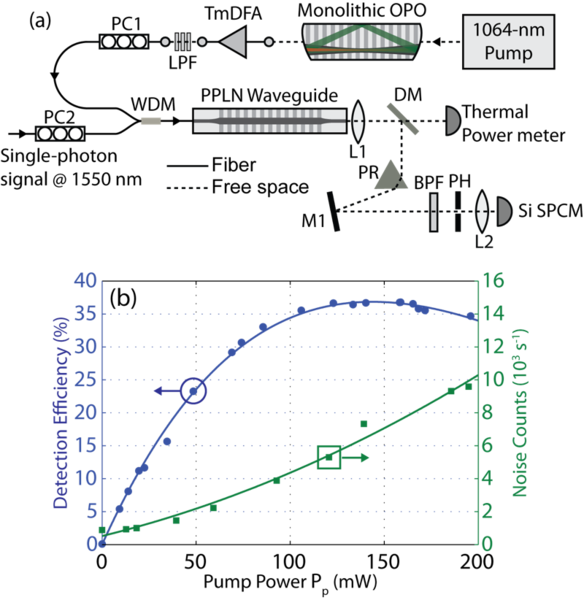Devices for Quantum Frequency Conversion
Researcher
Abstract
Reverse proton exchange waveguides in periodically poled lithium niobate enable efficient frequency conversion of optical signals at powers down to the single-photon level. One can show that sum- and difference-frequency generation allows one to translate the wavelength of a quantum state of light while preserving all quantum information (like phase coherence and photon statistics, for example), in a process called Quantum Frequency Conversion. QFC offers a way by which hybrid quantum systems with components operating at very different wavelengths can be created. In recent work in our group, we have demonstrated an upconversion single photon detector for the telecom band at 1550 nm pumped by a home-built monolithic PPLN optical parametric oscillator (a). The plot shows we reach a total system detection efficiency of 37%, approximately a factor of two better than the best telecom single-photon detectors.
A critical issue in QFC devices is the generation of noise photons due to spontaneous scattering processes involving the strong pump used for frequency conversion. We have analyzed the two major noise sources in QFC systems: spontaneous Raman scattering and parametric down-conversion. By intelligent choice of pump wavelengths and cascaded frequency conversion schemes it is possible to mitigate the effects of these noise sources. We are developing advanced QFC devices designed for low-noise frequency conversion to develop systems in which either semiconductor quantum dots or diamond color centers can be integrated with a fiber-optic communciation backbone, with the hope of creating long-distance quantum networks.
Figure

